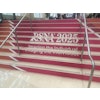When Dr. Doug Beall began his radiology residency at Baltimore's Johns Hopkins Medical Institutions in 1994, he soon found he had his hands full. There were the long hours, the on-call shifts, and the need to quickly cover every imaging specialty under the sun. And dictation proved nearly impossible.
"That was one of the things that was a lot more difficult than I thought it would be," Beall said. "I’d see people who were doing their dictation, and they were very descriptive and polished and accurate. So then I would start mine and it would be 'Uh, um….' Click and rewind. 'Um….' Click, rewind. It would take me forever and I wondered how it came so easily to others."
In an effort to help others through the dictation dilemma, and the many other challenges that radiology residents face, Beall and his co-authors have devised A Practical Guide to Residency in Diagnostic Radiology, a survival guide that deals with everything from how to administer contrast media to landing an employment contract.
Beall is now a fellow at Mayo Clinic in Rochester, MN, specializing in musculoskeletal and sports imaging. He talked to AuntMinnie.com about why he decided to create the handbook and what it has to offer.
It's interesting that you chose to call this a practical guide to residency. What do you feel this manual offers above and beyond what's already out there?
The idea was to create a consolidated source of information that provided specific examples of how to complete a residency in radiology. Some portions are clinical, some portions are about tests, some portions are about non-patient care issues like equipment parameters or contrast agents.
A lot of books don't incorporate clinical and non-clinical. This is a process guidebook. The idea is to help guide people’s daily activities.
Is there any particular section of the book in which you feel you’ve gone where no resident-oriented radiology book has gone before?
I think the sections on employment information and sample dictations are especially exciting. They deal with the kinds of things that people think about, but don’t really have an information source for.
Take dictation. It's not common to teach someone what the appropriate approach to dictation is and how it should be done. You are basically expected to just listen and learn. It won’t hurt someone to just stumble around a bit and figure it out on their own, but it’s good to have the basics on-hand.
In the employment section you have a chapter on grievances. Why get into what some might consider the "dark side" of residency?
That’s part and parcel of a residency. When things are going well, you're happy and you don’t think about issues like dispute resolution or arbitration. It seems like the system you are in is working fine -- until you have a complaint. Again, where do you go to figure out how to handle a grievance? To have this kind of access to information can only make the complaint process better.
Is the book as applicable to first-year residents as it is to fourth-year ones?
There’s something in this book for all residents. The fourth-year residents may be more interested in the chapters on finding a job or a fellowship, or taking the boards.
The first years are more concerned with actually doing procedures. Maybe someone needs to know how to go about injecting a contrast agent. It's in here.
As a resident, you are going to be working with educators who have been doing certain procedures for years, maybe someone who has done chest radiology for more than 20 years. It can be a bit overwhelming, so you have to pause and remember that it's only your third day on chest radiology, not your 30th year. It helps if you have some source to go back to for that same information.
How did the idea for the manual come about?
The idea originally came about in 1994 when the executive staff of the Resident Section of the American College of Radiology was having a session discussion at the annual ACR meeting.
I thought at the time that many of the questions brought up in the discussion were because of a general lack of detailed guidance in medical training. It appeared that many people simply weren't aware of many of the intricacies associated with residency training.
So we all got together and just wrote down everything we could: sample dictations, consensus opinions, employment and contract information.
It took about three years to compile, and it's an ongoing process. We plan to update it every three to four years. Two of the main chapters that we will be introducing are interventional radiology and a subset of the neuroangiography chapter.
Any last words of encouragement for all the residents out there?
Being a resident can be very overwhelming. When you first get started, your peers are some of the top medical students in the country. Your only bellwether of comparison is the brainiac next to you, and you wonder if you are learning anything because everybody else seems so smart.
But by the end of my residency, I realized that I really had learned a lot in that first year. Of course, by the fourth year, you are sort of expected to be all things to all people and just do it all. I’d say the ultimate goal of this book is to make a new situation a little less scary.
By Shalmali Pal
AuntMinnie.com staff writer
January 9, 2001
Click here to post your comments in AuntMinnie's Discussion Group on radiology residents' issues.
Copyright © 2001 AuntMinnie.com



















